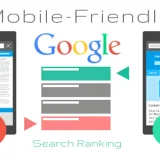


Does your website have a content strategy?
Pull is probably notorious for it – if we’re not, we’re not working hard enough. You decide that your tired old website needs a makeover. You’ve heard all about mobilegeddon, your site isn’t responsive and your CEO has finally agreed to invest in a shiny new site.

Pull is probably notorious for it – if we’re not, we’re not working hard enough. You decide that your tired old website needs a makeover. You’ve heard all about mobilegeddon, your site isn’t responsive and your CEO has finally agreed to invest in a shiny new site.
So you end up having a chat with the lovely folks at Pull. And they are asking you all sorts of awkward questions. Hey shouldn’t I be doing that – after all – who’s the buyer here?
They want to know you have a meaningful brand strategy, copy strategy, key messages sorted, know what your financial goals and performance KPIs for your new site are, they want you to have profiles for your targeted personas, and have given some thought to your conversion architecture. We thought the job was ‘design and build’. Now all these questions!
Well we are going to start asking another one: ‘What’s your content strategy?’ More often than not web re-builds are partial or incremental: Old content on a new CMS platform, a makeover to make the site responsive, add ecommerce functionality, add a new brand identity etc.
However, every now and then it makes sense to start over. And if you do, this is a great opportunity to not just put some new clothes on, but to re-think your site from the ground up.
So if I also need all of the things that Pull are asking me about above (and some of these like brand strategy are even more fundamental and should come first) where does a content strategy fit in and when should I do it?
If a strategy is how something is achieved, then a content strategy has to be the guiding principles by which a website’s objectives are met. It must be the bridge between the online objectives of your brand and the actual internal and external content that is developed, curate, sourced, linked-to and deployed. Having a good content strategy should be considered essential in an era when so much emphasis is put on the importance of generating high quality content and in content marketing.
So in the diagram below, you can see that your brand positioning, understanding your target’s needs, and your objectives could be considered as the absolute foundation stones for the performance website. So what should your content strategy consist of?
As a kind of checklist we would recommend the following:
- Brand summary – at minimum: Proposition, Positioning, Tone of Voice.
- Competitive analysis – summary of competitor’s content strategy, strengths and weaknesses.
- Target knowledge – at minimum: Target persona definition, target’s motivations, requirements and questions. Ideally, qualitative and quantitative research on the target.
- Conversion types and objectives – what do we want people to do on the site and in what numbers?
- SEO objectives – Key phrase research, identify target key phrases – both primary and long tail.
- User journey and content map – initial sketch at least.
- Converting collateral – what content should be provided in what order to create a conversion funnel?
- Should be done per targeted persona.
- Off-site content – what other content should we provide, encourage, incentivise the production of, purchase, respond to, link-to etc.? (e.g. social media, blogs, forum posts, reviews etc.)
- Calls to action – copy and signposting along with where they fit into the site map.
And a final thought to bear in mind when considering content and hierarchy on your site. Many websites are difficult to navigate and difficult to use. In almost every case in our experience, this is not caused by the absolute volume of content, but in the hierarchy and navigation. There is a kind of content paradox, which is that most conversions – especially on B2B sites – actually occur quite quickly after the visitor lands on the site, This is very good reason for making a conversion easy and quick. People often navigate a site until they are simply too bored to continue and go back to Google. Having said that, depending on what stage your prospect is at in their evaluation journey, it would be wrong not to provide all the information they may require.
As such, we would suggest that you try to build your content strategy around both these principles:
- Provide the smallest amount of content required to be presented to the target that will make them convert
- Provide all the content required to answer any target’s questions
In practice this will often mean layering content with the simplest and most compelling arguments high in the content hierarchy, and persistent calls to action that allow a visitor to short-circuit content at any time they feel they have enough information to commit.
This diagram may also help describe how to overcome one of the most common website failings – that of hierarchy.
So if you need a new website, we can probably help, but forgive us if we ask some tricky questions - at least we can also help in providing the answers!
Posted 23 April 2015 by Chris Bullick